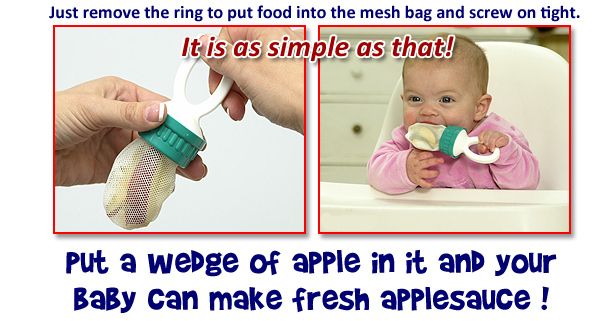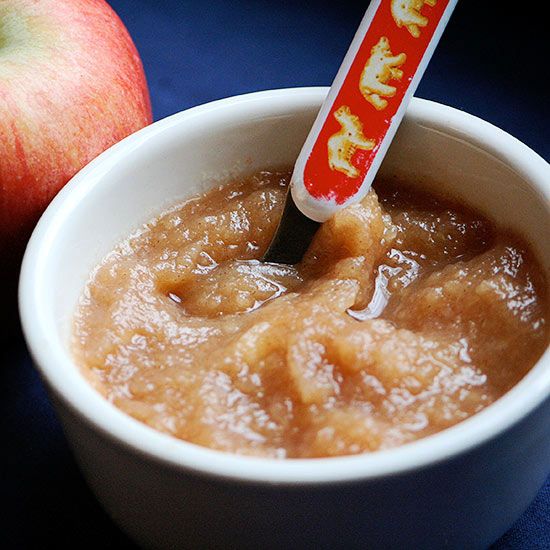When your baby refuses to bottle feed
Why Do Babies Do It?
Written by WebMD Editorial Contributors
Reviewed by Dan Brennan, MD on March 17, 2021
In this Article
- Reasons Why Your Baby Might Refuse a Bottle
- Tips to Help Your Baby Take the Bottle
- Other Things to Keep in Mind
Most babies of all ages will accept a bottle. It can be a helpful way to make sure your baby gets fed on their regular schedule, even when you’re not around. If your baby starts to refuse a bottle or has trouble eating with a bottle, there is usually an underlying cause. With a little trial and error, you should be able to get to the bottom of it.
Reasons Why Your Baby Might Refuse a Bottle
There are a few different reasons why your baby might refuse a bottle. Usually, you can try a few things to get to the bottom of it and get them feeding again in no time.
Check the temperature. Check to see that the temperature of the milk is just right. Some babies prefer their milk cold while others like it better when it’s a little warmer.
Check for a block. The bottle's teat is the hole where the milk comes out of. Sometimes this becomes blocked. You can check this by holding the bottle upside down. The milk should flow rather quickly.
Check the size. Different teats can affect the flow of the milk. If your baby seems frustrated by the milk flow, try switching to a different size teat.
Check the expiration. Are you using baby formula? Check to make sure that it isn’t expired and hasn't been open for longer than recommended.
Can’t find anything wrong with the bottle or the milk? Check if it has something to do with your baby:
Are they sick? If your baby has a cold, ear infection, or throat infection it might be painful or uncomfortable for them to eat or drink. If you suspect they’re sick, have your doctor check on them.
Are they distracted? When you try to give your baby the bottle does it seem like their mind is elsewhere? Sometimes, even television can distract babies from feeding. Ensure you have a peaceful place where you can keep them connected to the moment.
Ensure you have a peaceful place where you can keep them connected to the moment.
Are they full? Have you recently introduced your baby to solid food? They may be too full for milk from the bottle.
Have they lost interest? Is your baby enjoying solid foods? They may just no longer want the bottle, and that’s okay.
Never try to force your baby to drink from their bottle. Instead, be patient and simply try again later.
Tips to Help Your Baby Take the Bottle
Reduce attachment. Some babies become very attached to the idea of nursing or taking the bottle only from their mother. Sometimes the mom needs to be in a different room or outside the house before the baby will take the bottle from someone else.
Try different positions. Babies tend to prefer drinking from a bottle in different positions than when they were breastfeeding. Try sitting them on your knee, propped up so they can look around the room.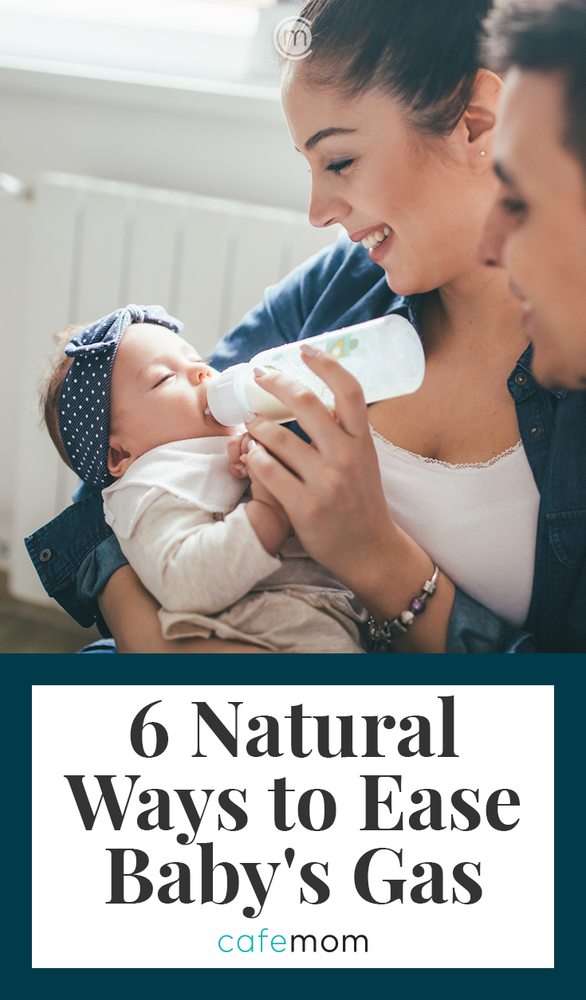
Move around. It can help your baby take the bottle if you walk around the room. You might also gently bounce or sway while feeding them.
Let them latch onto the bottle nipple. Instead of placing the bottle directly into your baby’s mouth, place it near their lip and let them latch onto it. This simulates their natural action while they were breastfeeding.
Wrap the bottle. Many mothers will wrap a burping/spit-up cloth around the bottle. This reminds the baby of their mom and makes them feel safe to eat.
Try tasting or smelling your breastmilk. Sometimes the flavor of your breastmilk can change or have a “soapy” taste. This is often due to changes in your diet, especially if you start taking fish oil supplements. Things like this don’t make your breast milk unsafe. They may just make it bad to the taste.
Try something different. If your baby is refusing the bottle, try giving them your milk with a different vessel. You could try a sippy cup, a spoon, or even a regular cup. You can do this by holding your baby in an upright position on your lap. Bring the milk gently to their mouth, letting them drink at their own pace.
You could try a sippy cup, a spoon, or even a regular cup. You can do this by holding your baby in an upright position on your lap. Bring the milk gently to their mouth, letting them drink at their own pace.
Other Things to Keep in Mind
If your baby is still refusing a bottle, don’t worry. Most babies will take one eventually.
If you have a routine with your baby where you feed them at the same time every day, it’s okay to change it up. Sometimes your baby may enjoy doing something else like cuddling, playing, or taking a ride in a stroller.
Whatever it takes, you and your baby will find what works to keep them fed and happy. After all, your baby loves you and knows that you are there to help them and make sure everything is okay.
Baby Refusing the Bottle? Try These Tips
If you’re having trouble bottle-feeding your infant, rest assured that you are far from alone. Around 25 percent of parents report feeding-related problems with their child at some point in their development.
If your baby has been breastfeeding, trying to introduce a bottle can also introduce some challenges. Likewise, changes to the formula or breast milk you’re giving them or the bottle you’re using can lead to difficulties even for experienced bottle-fed babies.
The American Academy of Pediatrics recommends delaying the introduction of foods other than breast milk until your baby is around 6 months old, suggesting exclusive breastfeeding before that time. However that’s not always realistic and you may find yourself introducing the bottle at any time during the first year.
Additionally, formula isn’t the only reason to use a bottle. Many breastfeeding parents want to incorporate bottle-feeding of breast milk for flexibility. The breastfeeding advocacy organization La Leche League suggests waiting until your breastfeeding baby is 3 to 4 weeks old before introducing a bottle.
Whenever you begin using bottles, it can be extremely frustrating trying to feed a baby who stubbornly refuses feeds.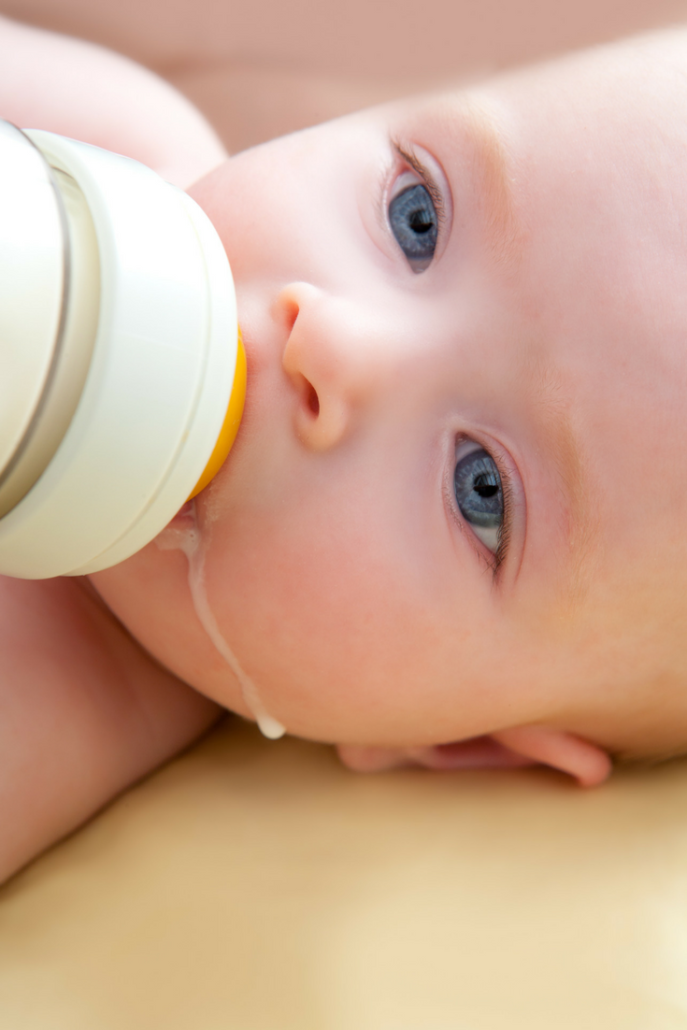 But with dedication, experimentation, patience, and love, you can eventually acclimate your baby to bottle-feeding.
But with dedication, experimentation, patience, and love, you can eventually acclimate your baby to bottle-feeding.
Since babies can’t communicate clearly, parents and caregivers are left wondering and guessing why their baby refuses bottle-feeding. The following reasons are some of the most common things to look out for if your baby refuses the bottle:
- Your baby was recently weaned and wants to continue breastfeeding.
- Your baby isn’t hungry enough to want feeding.
- Your baby is feeling sick, colicky, or otherwise unwell enough to feed.
- Your baby is being held in an uncomfortable position.
- Your baby doesn’t like the temperature, flavor, or texture of the milk.
- Your baby doesn’t like the texture or feel of the bottle.
Depending on your previous experience with feeding you may be able to figure out the specific reasons why they’re refusing the bottle. Many times, knowing why they refuse can give you better insight into figuring out how to fix the problem.
Some of the most common and effective things you can try to help your baby accept bottle-feeding include:
- Slowly, consistently, and gradually transition from breastfeeding to bottle-feeding.
- Wait until your baby is sufficiently hungry before feeding.
- Try changing the bottle size and shape, the nipple, or other aspects of the bottle to see what your baby responds to.
- Experiment with the temperature of the milk or formula. Breast milk is lukewarm, so make sure the bottle isn’t too warm or cool.
- If your baby is teething, try changing the temperature of the milk (teething babies sometimes prefer cold milk), massaging their gums, or otherwise helping them with the pain of new teeth poking through.
- Hold your baby in a different feeding position and see what they respond to.
- Allow someone else to handle the feeding. This can be especially helpful during a transition from breastfeeding to bottle-feeding.
Before changing the formula you’re using you may want to talk to your pediatrician. There are different types of formula customized to different needs, but too many changes or certain types of formula can cause other challenges.
There are different types of formula customized to different needs, but too many changes or certain types of formula can cause other challenges.
More tips to try
In addition to the list of possible remedies above, it is important to try to have a calm and consistent approach to bottle-feeding. Sometimes, your own frustrations with bottle-feeding can affect the infant and make it even harder for them to change.
In general, try to follow these behavioral tips for yourself when bottle-feeding a fussy baby:
- Maintain a comforting routine around mealtime.
- Avoid distractions, such as media, music, and toys when bottle-feeding.
- Feed your child at consistent time intervals of 3 to 4 hours.
- Stay calm and consistent. Don’t become angry, anxious, or overly excited with your feeding child.
- Limit mealtimes to 30 minutes.
- Try to avoid frustration during feeds. Consider having another caregiver offer the bottle if you need a break.

While it is normal for babies to sometimes refuse a bottle, there are some instances where chronic refusal to feed can be indicative of an eating disorder or an illness that requires medical attention.
About 1 to 5 percent of very young children have feeding disorder, which is characterized by an inability to consume an adequate amount of food, resulting in malnutrition.
Getting enough food is absolutely essential for a growing baby. If you think your baby is experiencing a feeding disorder making it difficult for them to gain weight, you should see a doctor immediately. Feeding disorders in early childhood are an important health issue.
In the short term, babies with feeding disorders will experience nutritional deficiency and weight loss (or inadequate weight gain), but in the long term, your baby can experience growth deficits, cognitive functioning problems, stunted neurodevelopment, and behavioral or emotional impairment.
Another time to talk to your baby’s doctor is if your baby refuses to eat due to an illness or pain.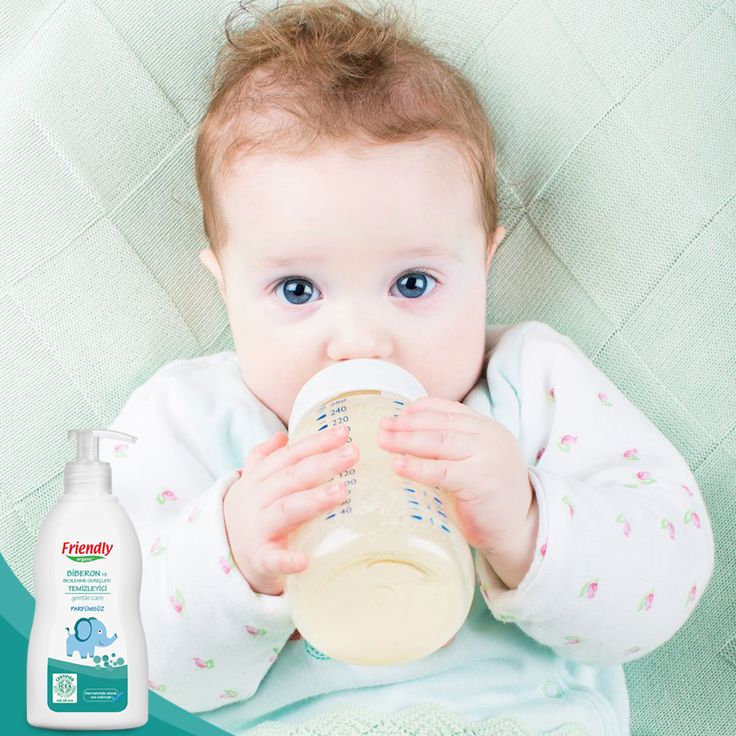 Call your doctor right away if in addition to refusing the bottle your baby is showing any of the following symptoms:
Call your doctor right away if in addition to refusing the bottle your baby is showing any of the following symptoms:
- fever
- vomiting
- constant crying
- diarrhea
- difficulty breathing
Consult with a doctor to determine whether there are any illnesses or physiological issues you are unaware of that might play a part in your child’s fussy eating.
Feeding difficulties are common problems in infants and toddlers. Don’t be too worried if your baby is struggling with the transition to bottle-feeding.
There are many different approaches you can take to fixing the problem, and if you are nervous or worried about any of your child’s eating habits, contact your doctor immediately.
With consistency, determination, and lots of attention paid to your baby, you can help them overcome their obstacles and anxieties around bottle-feeding.
Baby won't take a bottle | Philips Avent
search support iconSearch Keywords
Home ›› What to do when your baby refuses a bottle
↑ top
any problems. If your breastfed baby refuses a bottle, don't worry. This is a common occurrence in many babies who are used to breastfeeding. Obviously, this can create certain difficulties for moms, especially if you need to return to work in the near future.
If your breastfed baby refuses a bottle, don't worry. This is a common occurrence in many babies who are used to breastfeeding. Obviously, this can create certain difficulties for moms, especially if you need to return to work in the near future.
3 Philips Avent products to help you bottle feed:
So why is your baby refusing to bottle and crying? There are many ways to quickly and easily teach a breastfed baby to a bottle. Here are important tips on what to do when your baby refuses a bottle.
Is the baby refusing the bottle? Take a step back
If your baby cries while bottle feeding, the first thing to do is to start over and rethink your feeding approach and technique. Try the following steps when bottle feeding your baby: [1]
- Lift and tilt your baby's head forward. Before inserting the pacifier into the baby's mouth, make sure that the baby's head is raised and tilted over his body to avoid choking: so that the baby does not choke and have the opportunity to burp during bottle feeding.

- Insert the pacifier. Bring the pacifier to the baby's lips and gently guide it into the baby's mouth. In no case do not try to press the nipple on the baby's lips and try to push it into his mouth. After touching the pacifier to the baby's lips, wait for the baby to open his mouth and take the pacifier.
- Hold the bottle at an angle. Tilt the bottle at an angle so that the nipple is only half full. So the child can eat at his own pace.
- Let the baby burp during and after feeding. It can be useful for a child to burp not only after feeding, but also approximately in the middle of the process. This will help reduce gas or tummy discomfort that your baby may experience from swallowing too much air.
- Stop in time, do not overfeed the baby. If the baby begins to turn his head away from the bottle or closes his mouth, then he is full and you need to stop feeding.
- Perhaps the flow of milk from the nipple to the baby is weak or, on the contrary, too fast, so he is naughty and refuses the bottle.
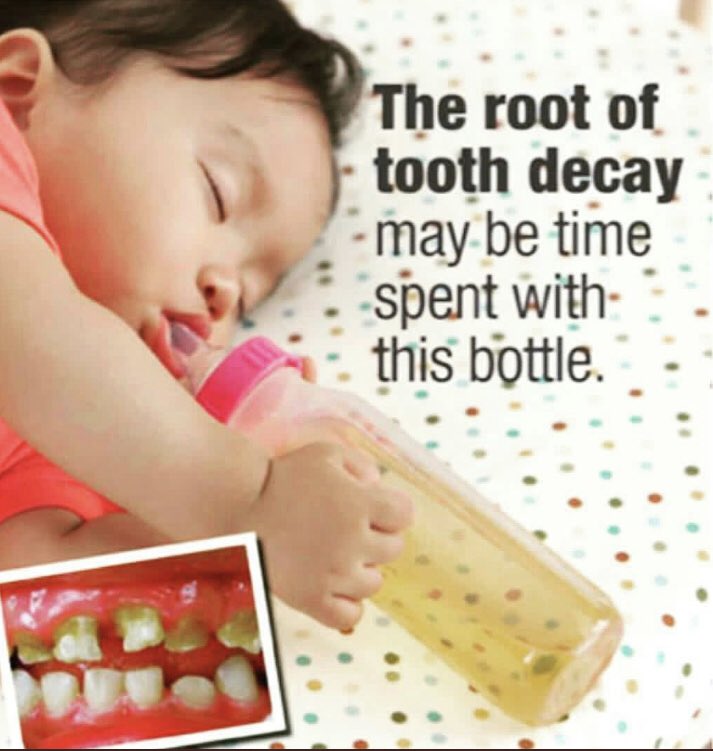 Try changing the nipple to a nipple with a different flow.
Try changing the nipple to a nipple with a different flow.
Other tips if your baby refuses the bottle
If you've followed the steps above and your baby still refuses the bottle, don't worry. There are other ways to help bottle feed your baby. Here are some simple tricks you can add to your bottle feeding process. [2]
1. Remind your child about mom.
Sometimes a child can be fed by someone other than his mother - dad, grandmother or, for example, a nanny. If your baby fusses while bottle feeding, try wrapping the bottle in something that smells like mommy, like a piece of clothing or some fabric. This will make it easier to feed the baby when the mother is not around.
2. Try to maintain skin contact while bottle feeding.
Some babies need contact with their mother, so try bottle feeding while leaning against you. However, some babies are better at bottle feeding when they are in the exact opposite position than when they are breastfed. For example, there is a position with bent legs. Lay the child on your bent knees, facing you, pointing the child's legs towards your stomach. During feeding, the baby will be able to look at you and contact you in this way. If your baby refuses a bottle, experiment to see which works best.
For example, there is a position with bent legs. Lay the child on your bent knees, facing you, pointing the child's legs towards your stomach. During feeding, the baby will be able to look at you and contact you in this way. If your baby refuses a bottle, experiment to see which works best.
3. Move while feeding.
Sometimes all it takes to get your baby to take the bottle is a little wiggle or walk. The next time your baby starts crying while bottle feeding, try moving around a little rhythmically to calm him down.
4. Try changing the milk temperature.
If the baby still does not want to take the bottle, check if the milk in the bottle is too hot or too cold. Before feeding, put some warm breast milk on the inside of your wrist to check the temperature. Milk should be warm, but if it seemed hot to you, just place the bottle for a short while under a stream of cold water.
Choosing the right bottle for your baby If you plan to combine bottle feeding with breastfeeding, it is advisable to choose bottles with a nipple that will have a wide base as the bottle will grip closer to the breast.
 Also pay attention to the fact that the nipple is firm and flexible, the child must make an effort to drink from the bottle, as well as from the breast. Give preference to nipples with an anti-colic valve that vents air out of the bottle.
Also pay attention to the fact that the nipple is firm and flexible, the child must make an effort to drink from the bottle, as well as from the breast. Give preference to nipples with an anti-colic valve that vents air out of the bottle. Natural bottle allows you to combine breast and bottle feeding. 83.3% of babies switch from a Natural bottle to breastfeeding and back.*
If you choose a bottle for artificial feeding, traditional bottles are fine, but it is desirable that the nipple is made of a hypoallergenic material, such as silicone, has an anti-colic valve and did not stick together when bottle fed. In case your baby spit up often, then use special bottles with anti-colic and anti-reflux valve, which reduces the risk of spitting up and colic.
Bottle with unique AirFree valve reduces the risk of colic, gas and spitting up. With this bottle, you can feed your baby in an upright or semi-upright position to reduce spitting up. Due to the fact that the nipple is filled with milk and not air during feeding, the baby does not swallow air, which means that feeding will be more comfortable.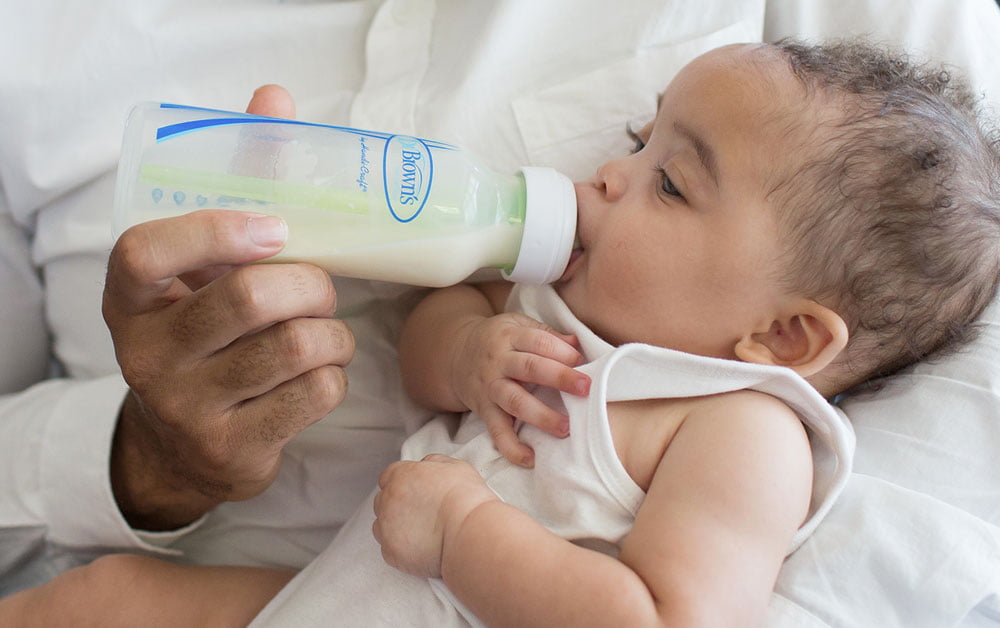
Both bottles are indispensable if you want to breastfeed, bottle feed or just bottle feed your baby.
“My baby refuses to breastfeed but bottle feeds – help!”
Sometimes a baby gets used to bottle feeding and refuses to breastfeed. Therefore, it is important to use bottles that are suitable for combining breastfeeding with bottle feeding. If, nevertheless, you are faced with the fact that the child refuses to take the breast, try using silicone nipple covers to make the transition from the bottle to the breast and back more imperceptible.
Remember that if you want to combine breastfeeding and bottle feeding, it is worth waiting at least a month before offering a bottle, so that you are lactating and have time to get used to each other and develop a breastfeeding regimen.
Breastfeed and bottle feed your baby with pleasure
Remember that it takes a while for your baby to get used to bottle feeding. This is completely normal. If you have to go to work, be sure to set aside enough time to bottle train your baby beforehand.
This is completely normal. If you have to go to work, be sure to set aside enough time to bottle train your baby beforehand.
Remember that every child is different, so what works for one may not work for another. With a little time and patience, you will find out what works best for your baby when he refuses a bottle.
You will identify your child's unique needs. However, if your baby still refuses the bottle after all the steps above, check with your pediatrician.
Articles and tips from Philips Avent
References:
*O.L. Lukoyanova, T.E. Borovik, I.A. Belyaeva, G.V. Yatsyk; NTsZD RAMS; 1st Moscow State Medical University THEM. Sechenova, "The use of modern technological methods to maintain successful breastfeeding", RF, 10/02/2012 3 llli.org - The Baby Who Doesn't Nurse
llli.org - Introducing a Bottle to a Breastfed Baby
Baby+ app
Download the app and track your child's development and growth with trackers and save those special moments forever.
Download app:
You are leaving the Philips Healthcare (“Philips”) official website. Any links to third party websites that may be included on this site are provided solely as a convenience to you. Philips makes no warranties regarding any third party websites or the information they contain.
I understand
You are about to visit a Philips global content page
You are about to visit the Philips USA website.
My baby doesn't want a bottle, what should I do?
In many cases, gestures that seem as natural and simple as giving a baby a bottle can be a headache. Many babies reject the texture of bottle nipples. , the smell that materials can emit, and even the difference when it comes to sucking, which has nothing to do with the smell of mother's breasts.
You might think your baby won't need to get used to a bottle because you're breastfeeding. But you would be surprised how many situations require drastic changes. Maybe your routines need to be changed and going back to work makes you give away your baby bottles. Even something as simple as giving him water or cereal to drink when the time comes, they require the use of a bottle in most cases.
Maybe your routines need to be changed and going back to work makes you give away your baby bottles. Even something as simple as giving him water or cereal to drink when the time comes, they require the use of a bottle in most cases.
Therefore, you should be prepared for this moment and know that your baby may not have any problems with the bottle you have chosen. But just in case the opposite happens, let's see some tips that can help you in this situation .
The most recommended is to gradually introduce this new element if the situation allows. That is, if you plan to return to work, you will definitely have to make a choice in favor of delayed breastfeeding. He will continue to breastfeed, but instead of the baby breastfeeding all the feedings, some of them will bottle feed.
Also, this step would need to be done with someone else, so that would be interesting. include this person in the onboarding process .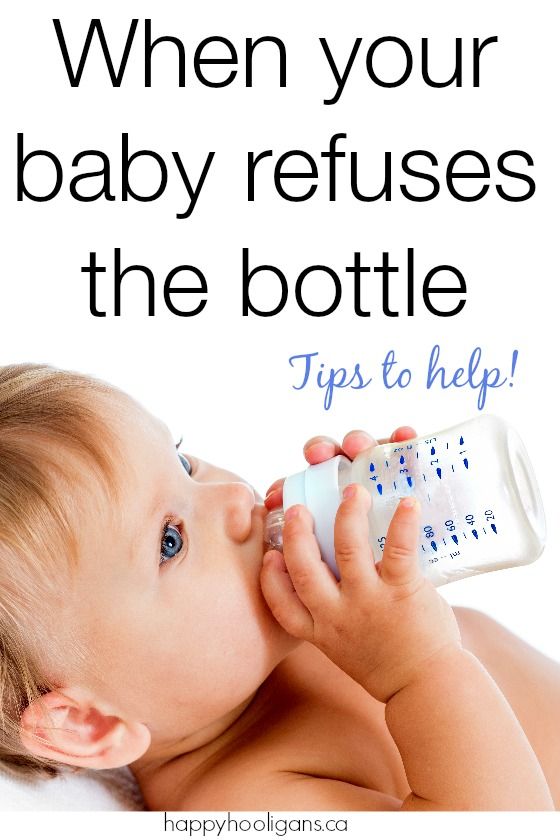 You can try the following tips:
You can try the following tips:
- Start imagining the bottle even if you are at home . This way your little one can gradually get used to it. But it is advisable that someone else give the bottle, even if you are not present at this time. You already know that the baby will recognize you by smell, and the same thing happens with milk: if you are present, he will cry until he starts suckling.
- Choose teat material carefully. If your child normally uses a pacifier, make sure the bottle nipple is made from the same material. Your baby will be more than happy with this texture and it will be much easier for him to adjust to the bottle.
- Try other pacifier materials . Perhaps the selected nipple is not suitable, some materials give off an odor and this can be unpleasant for the baby.
- Allows baby to manipulate and play with the nipple . In this way, you will be able to recognize this element with your feelings, and it will not be so strange for the baby.
 Remember to sterilize your nipples well before any use.
Remember to sterilize your nipples well before any use.
The main thing is to remain calm and patient. during this process, the same way you should treat everything related to raising your child. The little one may notice your nervousness and regard it as something negative, which may cause him to reject the bottle because he thinks it's bad. Be very patient and never force the child as you will only get the opposite effect.
Don't forget that any change in your child's routine can be stressful and that's the last thing you want to get. Surely you will soon make your baby forget about his rejection of the bottle and use it as usual. And if it doesn't, don't worry, there are other alternatives you can try if needed, like a syringe.
It's important to keep trying and keep trying, there are countless devices today designed specifically for babies. Surely you can find something that will suit the taste and preferences of your baby.

